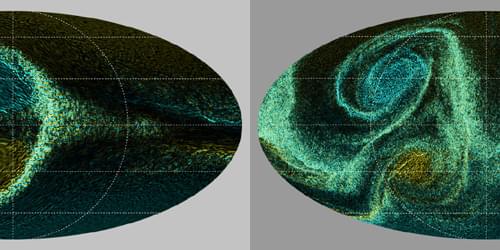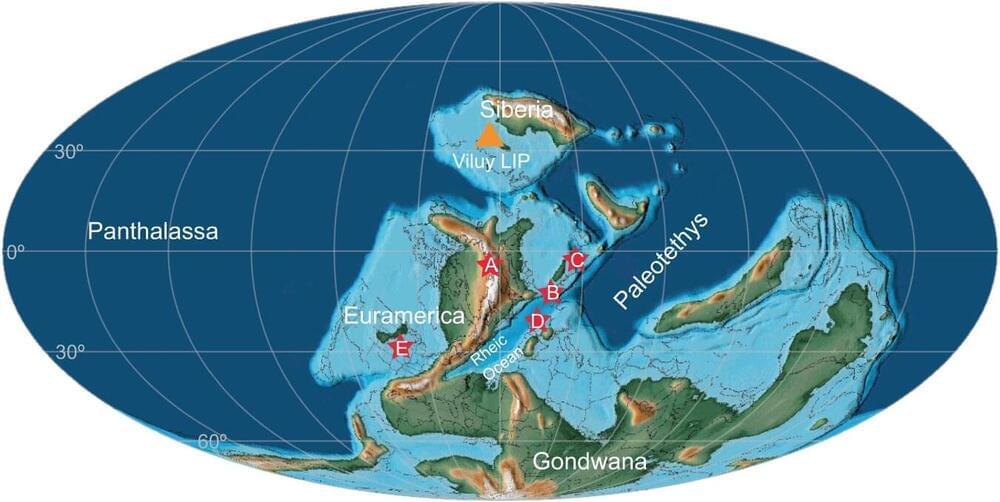Twenty-four years ago, Ray Kurzweil predicted computers would reach human-level intelligence by 2029. This was met with great concern and criticism. In the past six months technology experts have come around to agree with him. According to Kurzweil, over the next two decades, AI is going to change what it means to be human. We are going to invent new means of expression that will soar past human language, art, and science of today. All of the concepts that we rely on to give meaning to our lives, including death itself, will be transformed.\
\
Speakers:\
Ray Kurzweil\
Inventor, Futurist \& Best-selling author of ‘The Singularity is Near’\
\
Reinhard Scholl\
Deputy Director, Telecommunication Standardization Bureau\
International Telecommunication Union (ITU)\
Co-founder and Managing Director, AI for Good\
\
The AI for Good Global Summit is the leading action-oriented United Nations platform promoting AI to advance health, climate, gender, inclusive prosperity, sustainable infrastructure, and other global development priorities. AI for Good is organized by the International Telecommunication Union (ITU) – the UN specialized agency for information and communication technology – in partnership with 40 UN sister agencies and co-convened with the government of Switzerland.\
\
Join the Neural Network!\
👉https://aiforgood.itu.int/neural-netw…\
The AI for Good networking community platform powered by AI. \
Designed to help users build connections with innovators and experts, link innovative ideas with social impact opportunities, and bring the community together to advance the SDGs using AI.\
\
🔴 Watch the latest #AIforGood videos!\
/ aiforgood \
\
📩 Stay updated and join our weekly AI for Good newsletter:\
http://eepurl.com/gI2kJ5\
\
🗞Check out the latest AI for Good news:\
https://aiforgood.itu.int/newsroom/\
\
📱Explore the AI for Good blog:\
https://aiforgood.itu.int/ai-for-good…\
\
🌎 Connect on our social media:\
Website: https://aiforgood.itu.int/\
Twitter: / aiforgood \
LinkedIn Page: / 26,511,907 \
LinkedIn Group: / 8,567,748 \
Instagram: / aiforgood \
Facebook: / aiforgood \
\
What is AI for Good?\
We have less than 10 years to solve the UN SDGs and AI holds great promise to advance many of the sustainable development goals and targets.\
More than a Summit, more than a movement, AI for Good is presented as a year round digital platform where AI innovators and problem owners learn, build and connect to help identify practical AI solutions to advance the United Nations Sustainable Development Goals.\
AI for Good is organized by ITU in partnership with 40 UN Sister Agencies and co-convened with Switzerland.\
\
Disclaimer:\
The views and opinions expressed are those of the panelists and do not reflect the official policy of the ITU.
Category: climatology – Page 57


Study reshapes understanding of mass extinction in Late Devonian era
Diverse and full of sea life, the Earth’s Devonian era—taking place more than 370 million years ago—saw the emergence of the first seed-bearing plants, which spread as large forests across the continents of Gondwana and Laurussia.
However, a mass extinction event near the end of this era has long been the subject of debate. Some scientists argue the Late Devonian mass extinction was caused by large-scale volcanic eruptions, causing global cooling. Others argue a mass deoxygenation event caused by the expansion of land plants was to blame.
A recently published study in the journal Communications Earth & Environment led by researchers at IUPUI now posits that both factors played a role—and draws attention to the environmental tipping points the planet faces today.

Earth on verge of five catastrophic climate tipping points, scientists warn
Recently, economists and behavioral scientists have studied the pattern of human well-being over the lifespan. In dozens of countries, and for a large range of well-being measures, including happiness and mental health, well-being is high in youth, falls to a nadir in midlife, and rises again in old age. The reasons for this U-shape are still unclear. Present theories emphasize sociological and economic forces. In this study we show that a similar U-shape exists in 508 great apes (two samples of chimpanzees and one sample of orangutans) whose well-being was assessed by raters familiar with the individual apes. This U-shaped pattern or “midlife crisis” emerges with or without use of parametric methods. Our results imply that human well-being’s curved shape is not uniquely human and that, although it may be partly explained by aspects of human life and society, its origins may lie partly in the biology we share with great apes. These findings have implications across scientific and social-scientific disciplines, and may help to identify ways of enhancing human and ape well-being.
Kiwi Navy will test new AI, solar-powered robot boat for endless recon
The Royal New Zealand Navy is currently awaiting the arrival of its latest Uncrewed Surface Vessel, the wind-powered “Bluebottle,” ahead of a 7-month sea trial.
The Royal New Zealand Navy (RNZN) will soon receive its first 22.3-foot (6.8-meter) long renewable-powered Uncrewed Surface Vessel (USV) to trial on a short-term lease, the New Zealand Defense Force has announced. Called “Bluebottle,” the USV will provide persistent surveillance around the waters of New Zealand for fishery protection, border protection, or meteorological data.
Autonomous border control
HMNZS Aotearoa is currently transporting the USV from Sydney to Auckland. Once operational, “Bluebottle” will undertake maritime tasks without fuel or personnel on its planned seven-month-long trial. Designed and built by Sydney-based Ocius Technology, the company has sold several USVs to the Australian Defence Force and collaborated with the Australian Border Force, energy, and scientific agencies.

Cooling Functions of Forests: Investigating Microclimate Mechanisms
How do forests cool themselves during the summer? This is what a recent study published in Agricultural and Forest Meteorology hopes to find out as a team of international researchers investigated the forests cool themselves through water evaporation and shading. However, climate change could have drastic consequences towards this type of natural air conditioning, specifically from droughts that dry up the soil, disabling a forest’s ability to stay cool during hot months.
For the study, the researchers collected daily measurements over four straight summer seasons of soil moisture and air temperature across 54 sites in broadleaf forests throughout Central Europe. They discovered that shaded forests were typically 2 degrees Celsius (36 degrees Fahrenheit) cooler than temperatures outside the shaded forests. Additionally, they discovered that this cooling effect was driven by soil moisture with this cooling effect becoming less prevalent as soils become drier.
“The findings are alarming in the context of climate change as more frequent and more severe droughts may threaten the cooling functions of forests,” said Dr. Caroline Greiser, who is a landscape ecologist at Stockholm University and lead author of the study.

Study illuminates formation of US east coast during break up of supercontinent Pangea
A recent study published in the Journal of Geophysical Research: Solid Earth sheds new light on the formation of the East Coast of the United States—a “passive margin,” in geologic terms—during the breakup of the supercontinent Pangea and the opening of the Atlantic Ocean around 230 million years ago.
In geology, passive margins are “quiet” areas, locations with minimal faulting or magmatism, where land meets the ocean. Understanding their formation is crucial for many reasons, including that they are stable regions where hydrocarbon resources are extracted and that their sedimentary archive preserves our planet’s climate history as far back as millions of years.
The study, co-authored by scientists from the University of New Mexico, SMU seismologist Maria Beatrice Magnani, and scientists from Northern Arizona University and USC, explores the structure of rocks and the amount of magma-derived rocks along the East Coast and how they change along the margin, which may be tied to how the continent was pulled apart when Pangea fragmented. This event may have also influenced the structure of the Mid-Atlantic Ridge, a vast underwater mountain system running down the center of the Atlantic Ocean.


Tsunami warning after Philippines hit by 7.5 magnitude earthquake
An earthquake of at least magnitude 7.5 struck Mindanao in the southern Philippines late on Saturday, triggering evacuation orders for some areas of the country and for south-west Japan over warnings of tsunami waves of 1 metre (3ft) or more.
The Philippine Seismology Agency, Phivolcs, said the waves could hit the Philippines by midnight local time (4pm GMT) and continue for hours, though there were no initial reports of significant wave damage by that time.

Coal-producing West Virginia is converting an entire school system to solar power
CHARLESTON, W.Va. (AP) — An entire county school system in coal-producing West Virginia is going solar, representing what a developer and U.S. Sen. Joe Manchin’s office touted on Wednesday as the biggest-ever single demonstration of sun-powered renewable electricity in Appalachian public schools.
The agreement between Wayne County Schools and West Virginian solar installer and developer Solar Holler builds on historic investments in coal communities made possible by the Inflation Reduction Act, which Democratic Sen. Manchin had a major role in shaping as chairman of the Senate Energy and Natural Resources Committee.
Manchin, who announced this month that he wouldn’t run for reelection in the deep-red state, citing an increasingly polarized political system, was quick Wednesday to tout U.S. President Joe Biden’s 2022 landmark climate, health and tax law, which placed special emphasis on creating new clean energy jobs.